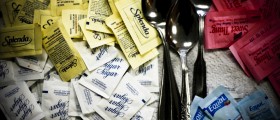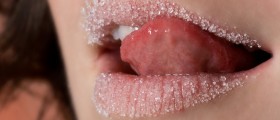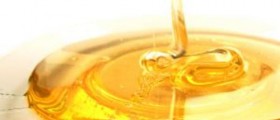
Sucralose is an artificial sweetener that is also known under the code E955. This artificial sweetener contains no calories but it is approximately 600 times sweeter than sucrose, the regular table sugar. Sucralose is twice as sweet as saccharin, and 3.3 times as sweet as aspartame. This feature makes it very suitable for commercial products and more favorable than the other artificial sweeteners.
Uses of Sucralose
Sucralose is added in small quantities to more than 4,500 food and beverage products. It is used as a replacement for sugar especially in products suitable for diabetics and people on low calorie diet. Sucralose has been accepted as safe by several national and international food safety regulatory bodies, including the U.S. Food and Drug Administration (FDA). It is ranked as safe food with recommended daily intake of 9 mg/kg/day. In the United States, sucralose is used in: baked goods, chewing gum, fats and oils, jams and jellies, processed fruits and fruit juices, sweet sauces, toppings, syrups, coffee and tea, dairy products, frozen diary deserts, gelatins, puddings, fillings, milk products and sugar substitutes.
However, there are some serious health concerns about sucralose and the scientific evidence strongly suggesting the chemical sweetener sucralose may harm human body.
Sucralose dangers
Sucralose is first introduced as a sugar-derivative, converted from cane sugar to no-calorie sweetener that isn’t recognized as sugar by the body and therefore is not metabolized. However, sucralose is significantly absorbed and metabolized by the body. According to the FDA’s report, the body absorbs 11% to 27% of sucralose, and the rest is excreted unchanged in feces. Another warning fact is that about 20% to 30% of absorbed sucralose is metabolized and it concentrates in the liver, kidneys, and in gastrointestinal tract. But, what is really worrying is that sucralose breaks down into small amounts of 1.6-dichlorofructose, a chemical which has not been adequately tested in humans.
Sucralose is a cholorocarbon, derived from sugar through a process that selectively substitutes three atoms of chlorine for three hydrogen-oxygen groups on the sucrose molecule. The chlorocarbons have long been known for causing organ, genetic, and reproductive damage. They are associated with the shrinkage of the thymus - a gland that is essential for proper functioning of the immune system, swelling of the liver, kidneys and calcification of the kidneys.
Research in animals shows that sucralose causes serious health problems such as: up to 40% shrinkage of the thymus glands, enlargement f liver and kidneys, atrophy of lymph follicles, reduced growth rate, decreased red blood cell count, extended pregnancy period, aborted pregnancy, birth defects and diarrhea. Despite the worrying results, its long term safety for humans is yet unknown, as there are no long-term scientific researches done on humans.

















Your thoughts on this
Loading...